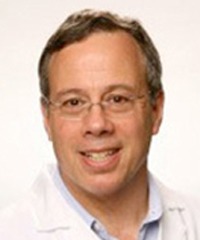Oncology
Multiple Myeloma
Treatment Recommendations for Maintenance Therapy in Patients With Multiple Myeloma
Overview
While lenalidomide as maintenance therapy is the strategy for most patients with multiple myeloma, there is ongoing debate about how maintenance therapy might be optimized in the future. Our featured experts provide information on the latest recommendations for maintenance therapy in multiple myeloma.
Q: What is your current approach to maintenance therapy for patients with multiple myeloma, and how might maintenance therapy evolve in the near future?
Carol Ann Huff, MD
|
|
“Hopefully, as more data emerge, we will take a more stratified approach, but, at present, we have strong, compelling data from randomized trials for the effectiveness of lenalidomide as maintenance therapy.”
McCarthy et al reported data from a meta-analysis of 3 large, randomized controlled trials looking at lenalidomide vs placebo as maintenance following autologous stem cell transplantation. In this analysis, both remission duration and overall survival were significantly longer with lenalidomide than with placebo, providing compelling evidence that patients with multiple myeloma are best served by maintenance therapy with lenalidomide as compared with no maintenance. At a minimum, that is the maintenance strategy that is used in the majority of patients with multiple myeloma. Nevertheless, the issue of relapse remains. Even patients who achieve a minimal residual disease–negative state prior to maintenance therapy continue to relapse, and patients with high-risk disease have shorter overall survival. As a result, studies are underway that are examining combinations of proteasome inhibitors (PIs) and immunomodulatory drugs (IMiDs), as well as monoclonal antibody–based maintenance approaches, that may constitute a better maintenance approach than treating with 1 oral IMiD alone. We use this multipronged approach in select patients with particularly high-risk features, such as 17p deletion (del[17p]) and 1q amplification; in these situations, when a clinical trial is not possible, we will use dual-modality therapy with a PI and an IMiD. Depending on the patient’s bone marrow biopsy following transplantation, we may intensify therapy prior to maintenance if significant residual disease is present. There is also the question of whether it is possible that not every patient with multiple myeloma requires maintenance therapy. That is more difficult to answer. Hopefully, as more data emerge, we will take a more stratified approach, but, at present, we have strong, compelling data from randomized trials for the effectiveness of lenalidomide as maintenance therapy. In our practice, we continue maintenance therapy to progression or intolerance.
Paul G. Richardson, MD
|
|
“There is now the standard of a backbone of immunomodulation and antiresorptive, bone-targeted therapy that can be built upon rationally, based on knowledge of the disease and the actions of additional agents.”
We are acquiring clear evidence demonstrating that the discontinuation of maintenance therapy at 2 years is not the right approach. In our parallel US study, which is examining the continuation of lenalidomide maintenance therapy until progression, our interim analysis has been pushed back longer than we expected because the effect of continuous lenalidomide maintenance therapy has been favorable in both study arms. Another interesting observation from our study is that maintenance is proving to be more challenging after autologous stem cell transplantation. Dosing, schedule, cytopenias, and infections are potentially more of a challenge for the transplant arm. We will learn more as the data mature, but, anecdotally, this has been my experience both within the study and outside of it, and other groups in different settings have had similar observations. The conditions that exist before the initiation of maintenance therapy impact how that therapy can be delivered. In any event, there is now the standard of a backbone of immunomodulation and antiresorptive, bone-targeted therapy that can be built upon rationally, based on knowledge of the disease and the actions of additional agents. Ixazomib is an attractive option for patients with del(17p) who require an oral treatment as part of their second-line therapy, and it is being investigated in the post-transplant maintenance setting, with favorable data thus far. We know from numerous studies that immunomodulatory treatment alone is going to help, but, typically, it is not going to be sufficient in high-risk disease. Also, I agree with comments made with regard to the beneficial role of PIs as part of maintenance therapy, particularly in patients who do not have transplantation. It is also very likely that there will be an increasing role in maintenance for antibodies. In the MAIA study, for example, the impact of daratumumab has been quite remarkable in terms of the degree of progression-free survival benefit seen increasing compared with the control arm.
James R. Berenson, MD
|
|
“Patients who are on bortezomib for upfront treatment, which often is the case in our clinic, will continue on that or will switch to ixazomib in our maintenance trial.”
Our approach to maintenance therapy is to continue the same treatment that the patient has received as part of their induction or relapse therapy, but we omit chemotherapy-related agents because of their untoward effects on bone marrow. Patients who are on bortezomib for upfront treatment, which often is the case in our clinic, will continue on that or will switch to ixazomib in our maintenance trial. We pull away from IMiDs in patients who did not use them as part of their induction or relapse treatment. There are certainly untoward effects of lenalidomide on the gastrointestinal tract and nervous system that may be underrecognized in the community. We do not use the IMiDs in the upfront treatment of most patients; however, when patients have high-risk features, such as plasma cell leukemia, poor cytogenetics, pancytopenia, or renal failure from myeloma, we want to treat them as aggressively as possible. You do not want to risk treatment failure in a patient with renal failure, for instance, who may end up permanently on dialysis; although, as patients live longer, we are performing more kidney transplants now than ever before among dialysis-dependent patients who achieve durable, long-term, complete remissions. We are currently conducting a maintenance trial among patients who received lenalidomide and bortezomib as upfront therapy. Participants are being randomized to receive either lenalidomide with ixazomib or ixazomib alone. Other trials are performing similar analyses in the maintenance setting for patients with multiple myeloma.
References
Attal M, Lauwers-Cances V, Hulin C, et al. Lenalidomide, bortezomib, and dexamethasone with transplantation for myeloma. N Engl J Med. 2017;376(14):1311-1320.
Dimopoulos MA, Gay F, Schjesvold F, et al; TOURMALINE-MM3 study group. Oral ixazomib maintenance following autologous stem cell transplantation (TOURMALINE-MM3): a double-blind, randomised, placebo-controlled phase 3 trial. Lancet. 2019;393(10168):253-264.
Facon T, Kumar SK, Plesner T, et al. Phase 3 randomized study of daratumumab plus lenalidomide and dexamethasone (D-Rd) versus lenalidomide and dexamethasone (Rd) in patients with newly diagnosed multiple myeloma (NDMM) ineligible for transplant (MAIA). Abstract presented at: 60th American Society of Hematology Annual Meeting & Exposition; December 1-4, 2018; San Diego, CA. Abstract LBA-2.
McCarthy PL, Holstein SA, Petrucci MT, et al. Lenalidomide maintenance after autologous stem-cell transplantation in newly diagnosed multiple myeloma: a meta-analysis. J Clin Oncol. 2017;35(29):3279-3289.
Richardson PG, Laubach J, Gandolfi S, Facon T, Weisel K, O'Gorman P. Maintenance and continuous therapy for multiple myeloma. Expert Rev Anticancer Ther. 2018;18(8):751-764.
Roussel M, Hebraud B, Hulin C, et al. The impact of lenalidomide, bortezomib, and dexamethasone treatment on health-related quality of life in transplant-eligible patients with newly-diagnosed multiple myeloma: results from the IFM/DFCI 2009 trial. Abstract presented at: 60th American Society of Hematology Annual Meeting & Exposition; December 1-4, 2018; San Diego, CA. Abstract 716.
Sengsayadeth S, Malard F, Savani BN, Garderet L, Mohty M. Posttransplant maintenance therapy in multiple myeloma: the changing landscape. Blood Cancer J. 2017;7(3):e545.
Wang Y, Yang F, Shen Y, et al. Maintenance therapy with immunomodulatory drugs in multiple myeloma: a meta-analysis and systematic review. J Natl Cancer Inst. 2015;108(3):djv342.













